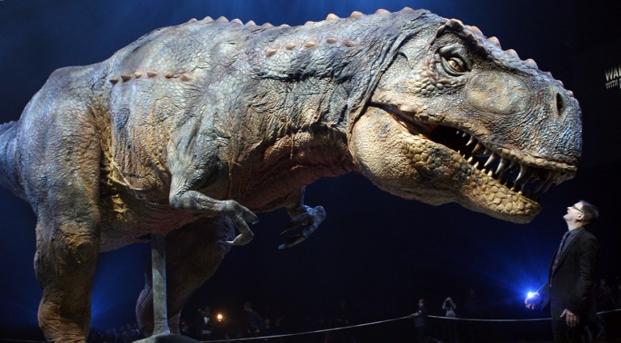-
Tips for becoming a good boxer - November 6, 2020
-
7 expert tips for making your hens night a memorable one - November 6, 2020
-
5 reasons to host your Christmas party on a cruise boat - November 6, 2020
-
What to do when you’re charged with a crime - November 6, 2020
-
Should you get one or multiple dogs? Here’s all you need to know - November 3, 2020
-
A Guide: How to Build Your Very Own Magic Mirror - February 14, 2019
-
Our Top Inspirational Baseball Stars - November 24, 2018
-
Five Tech Tools That Will Help You Turn Your Blog into a Business - November 24, 2018
-
How to Indulge on Vacation without Expanding Your Waist - November 9, 2018
-
5 Strategies for Businesses to Appeal to Today’s Increasingly Mobile-Crazed Customers - November 9, 2018
Asteroid, Volcanoes Double Whammy Doomed Dinosaurs
The ground shook so violently that the deep Earth’s plumbing system was disrupted, triggering violent eruptions of volcanoes across a region of India known as the Deccan Traps where mountains of thickly layered lava now stand in testimony.
Advertisement
A massive asteroid strike 66 million years ago triggered a string of potent volcanic eruptions that spelled doom for the dinosaurs, U.S. researchers said Thursday. The volcanic eruptions in Deccan Traps were the largest “the Earth had seen in 60 million years”.
Researchers have dated lava flows in the Deccan Traps in India that revealed evidence of how slow eruptions occurred simultaneously during the time of the asteroid impact where eruptions doubled their lava output in the next 50,000 years.
“The two processes in tandem caused the extinctions”, added Paul Renne, director of the Berkeley Geochronology Center and a University of California, Berkeley geologist, who led the study in the journal Science.
How the asteroid impact half a world away from India bumped up lava production is a mystery, Renne says.
“The time it took marine fauna and many aspects of ocean chemistry to recover back to pre-extinction values is about half a million years, which happens to be the amount of time it took the volcanism to die down”, said Professor Renne.
When the giant asteroid slammed into the Earth, it left behind the Chicxulub impact crater off what is now the Yucután Peninsula in Mexico.
The new evidence is based on measurements dating layers of volcanic rock to track the progress of the Deccan Traps that were more accurate than any made before. And ultimately, it’s impossible to determine if volcanoes or the asteroid impact caused the extinction, he says.
“An asteroid 10 kilometers across, about the size of Manhattan, hitting the Earth is traumatic enough”. There, they sampled different levels of volcanic rock (the lower ones are older, and higher ones are younger, giving the scientists a layer-by-layer look through time).
“If our high-precision dates continue to pin these three events-the impact, the extinction and the major pulse of volcanism-closer and closer together, people are going to have to accept the likelihood of a connection among them”. But the simultaneous changes in the lava flows and the impact at the KT boundary seem more than mere coincidence. “The scenario we are suggesting-that the impact triggered the volcanism-does in fact reconcile what had previously appeared to be an unimaginable coincidence”, Richards said in a press release.
In the Science paper, they describe major changes in the Deccan Traps volcanism, which was probably “bubbling along happily, continuously and relatively slowly” before the extinction, Renne said. The formation was created by a massive flow of lava. Although eruptions happened less often, they were-on average-much larger than preimpact eruptions, Renne says, with possibly disastrous consequences for Earth’s ecosystems.
Advertisement
“That transition in magma flow occurred right at the time of the impact event”, said Professor Renne. Data show a clear link between the asteroid impact and extinction patterns worldwide, but scientists haven’t found signs of a global effect of volcanism at the end of the Cretaceous period, says paleontologist David Fastovsky of the University of Rhode Island in Kingston.




























